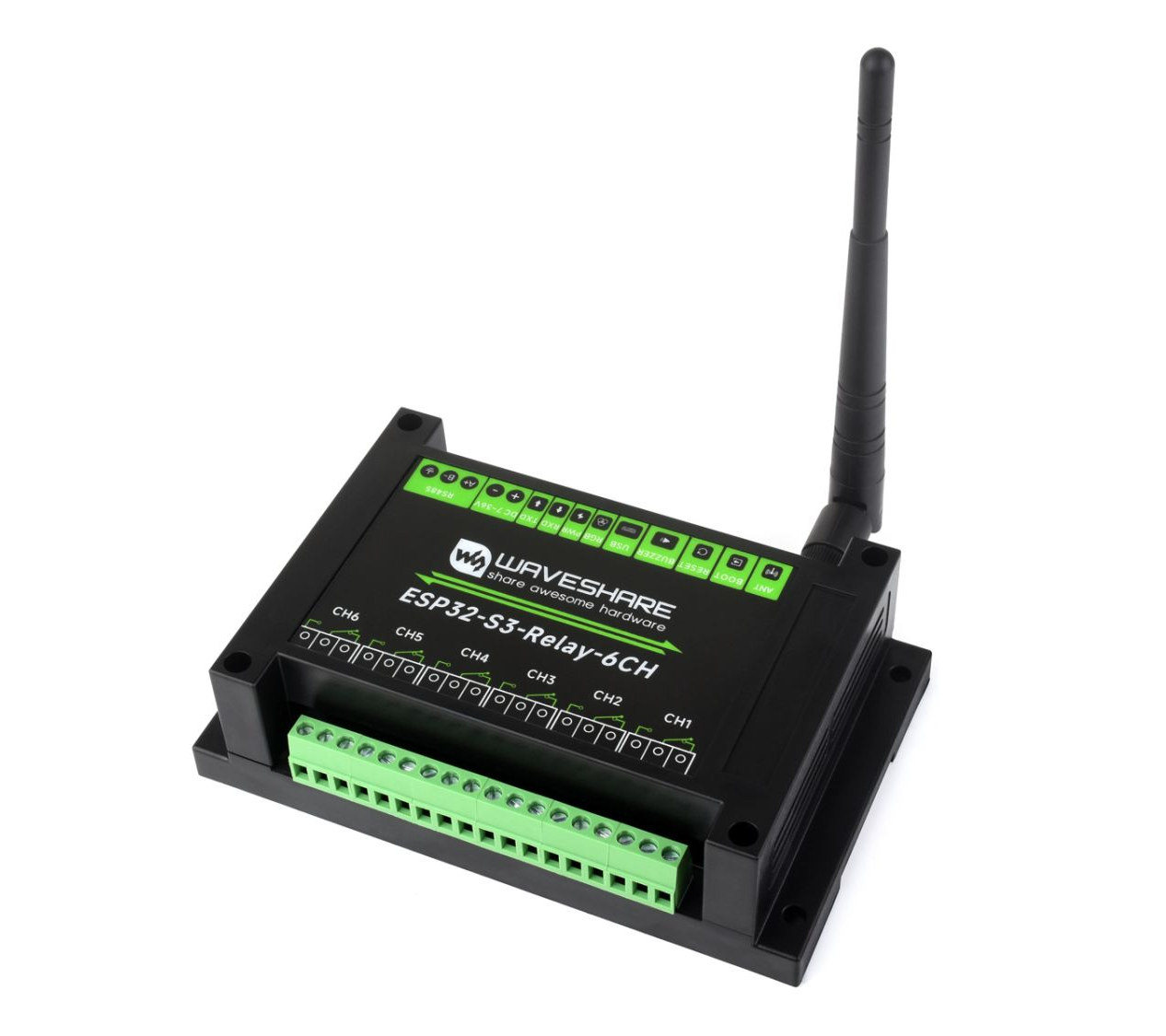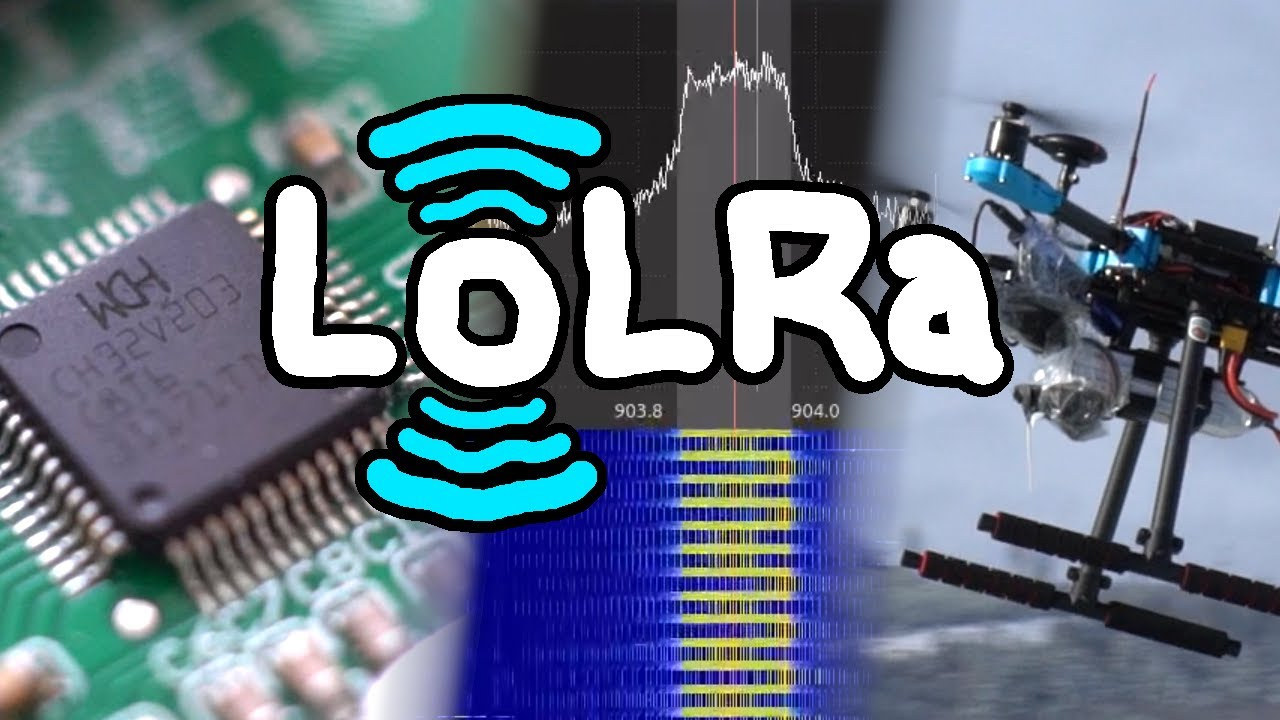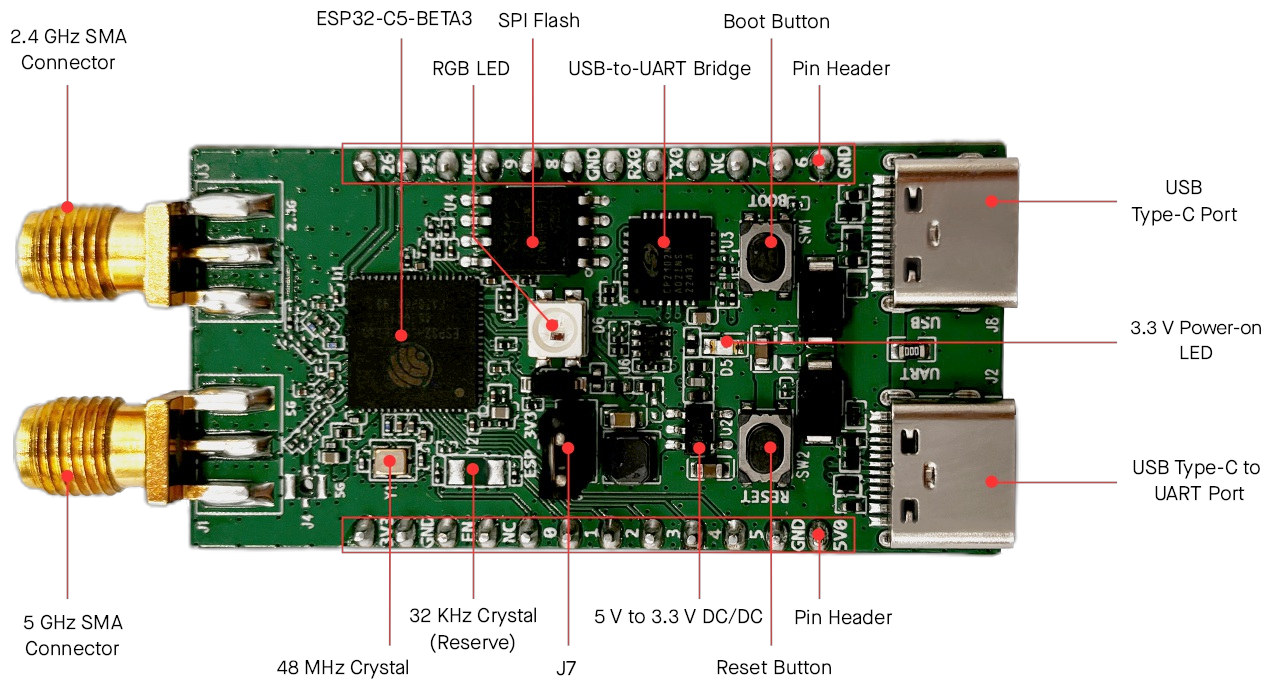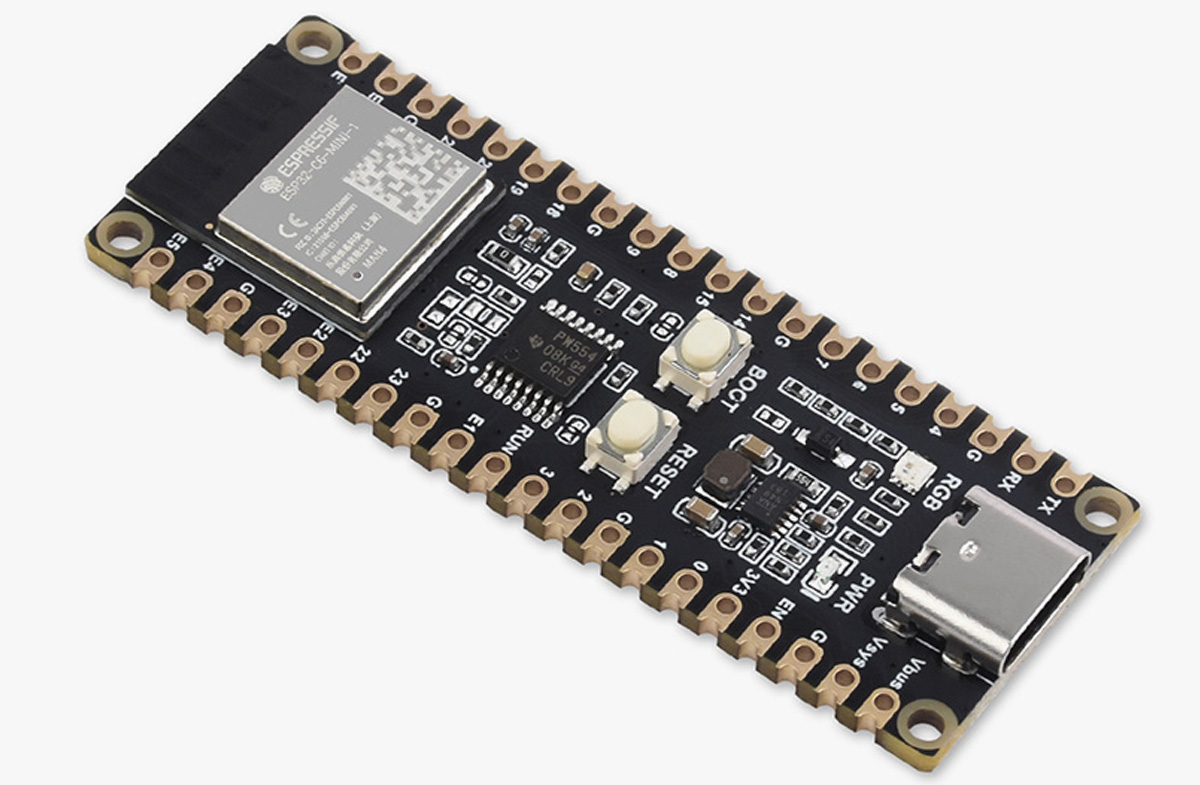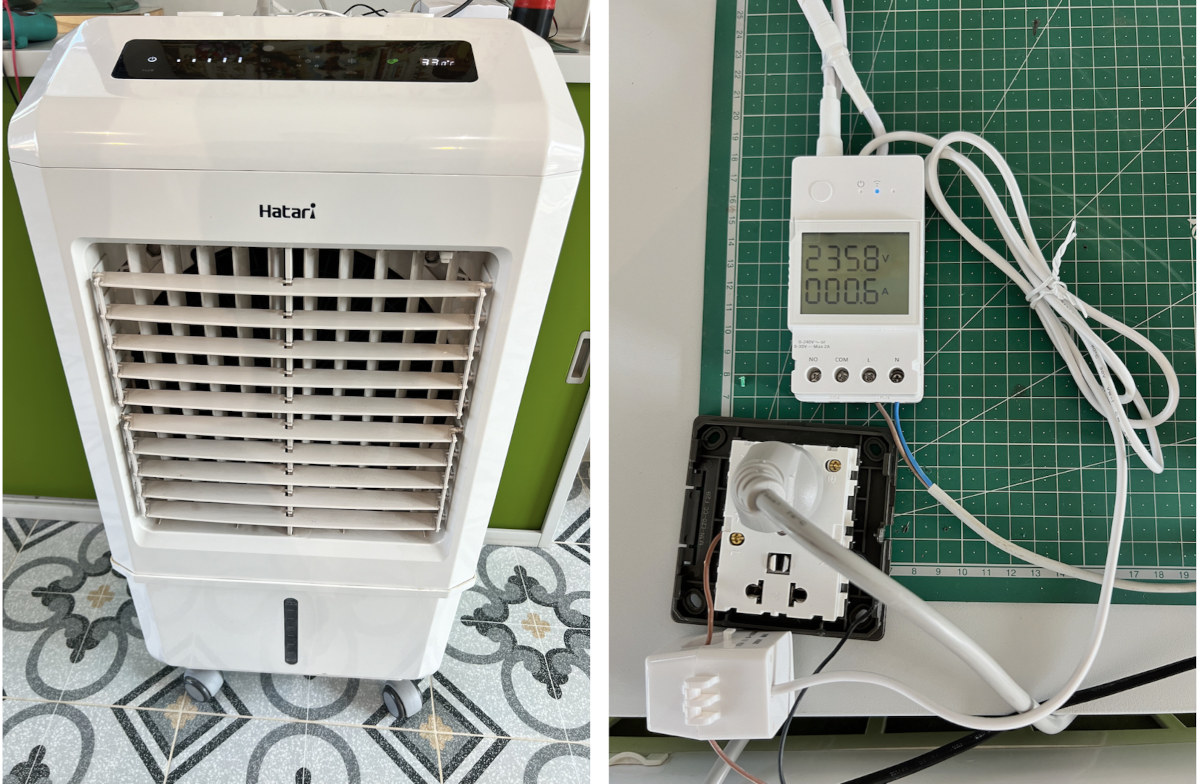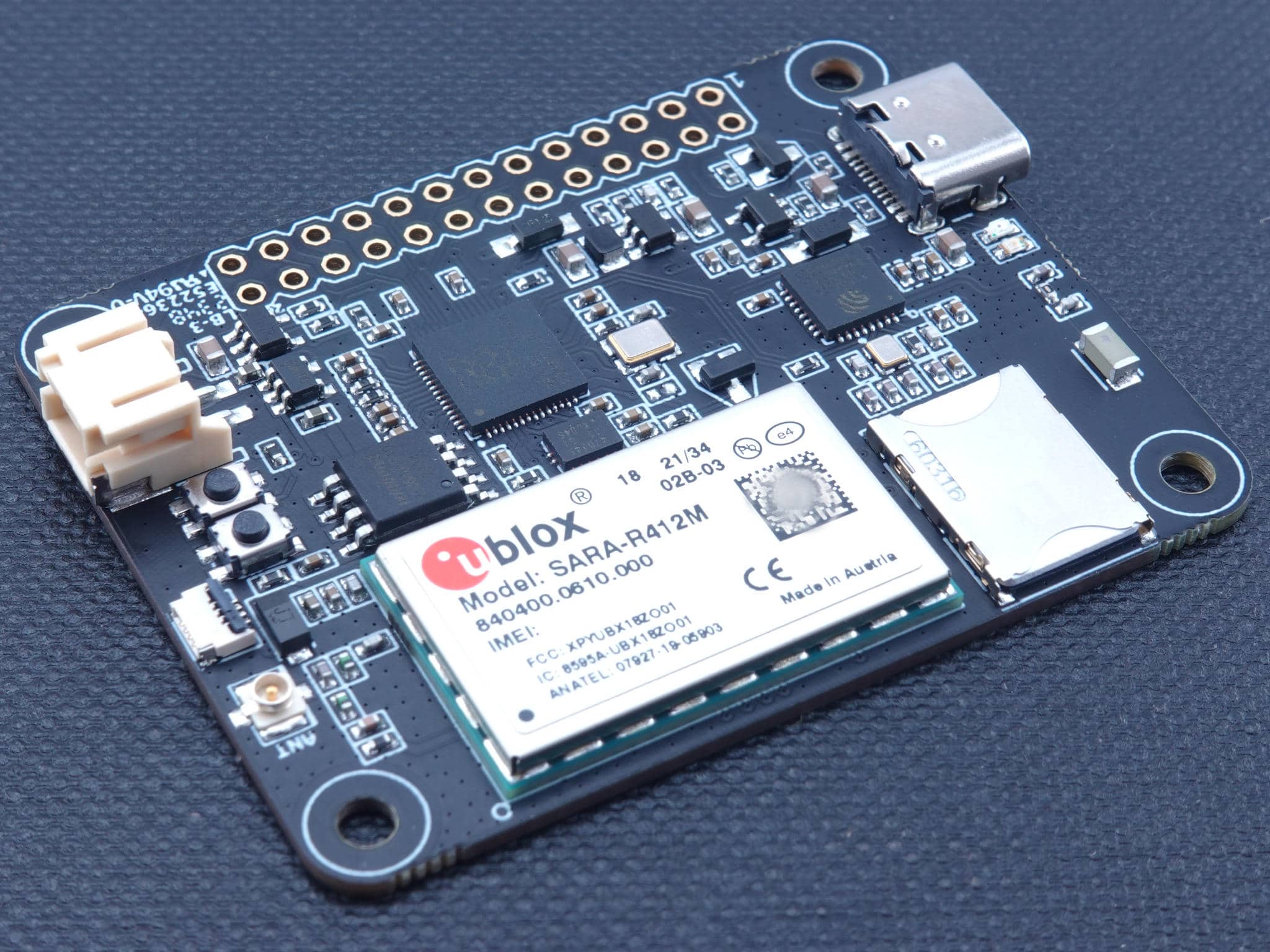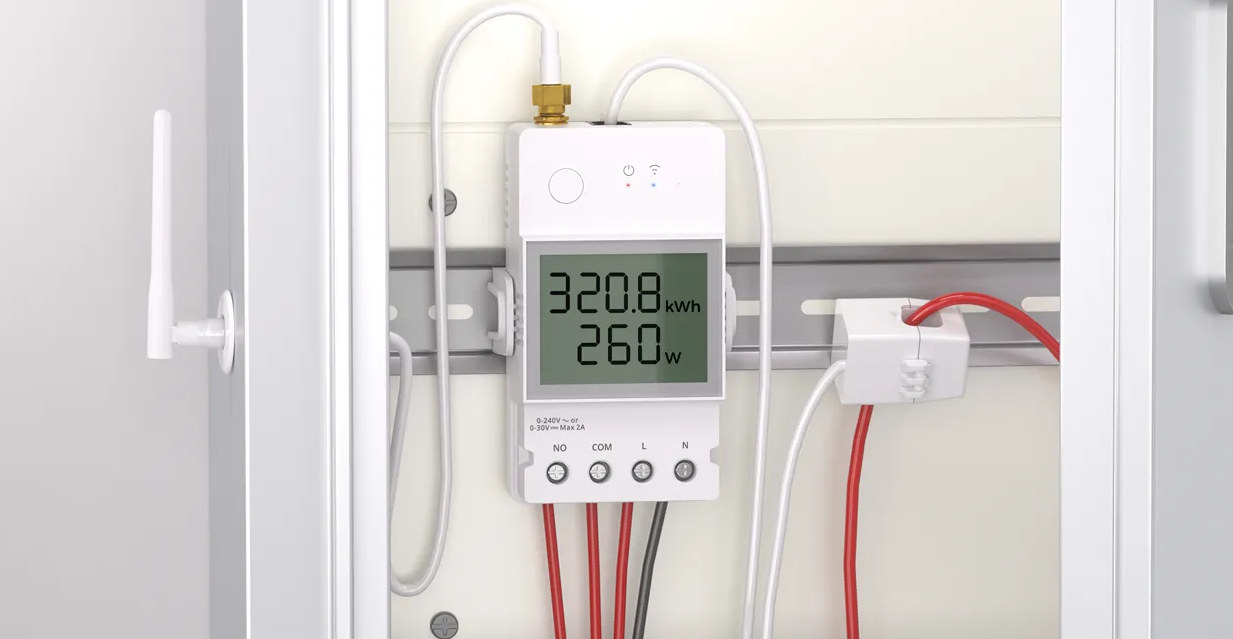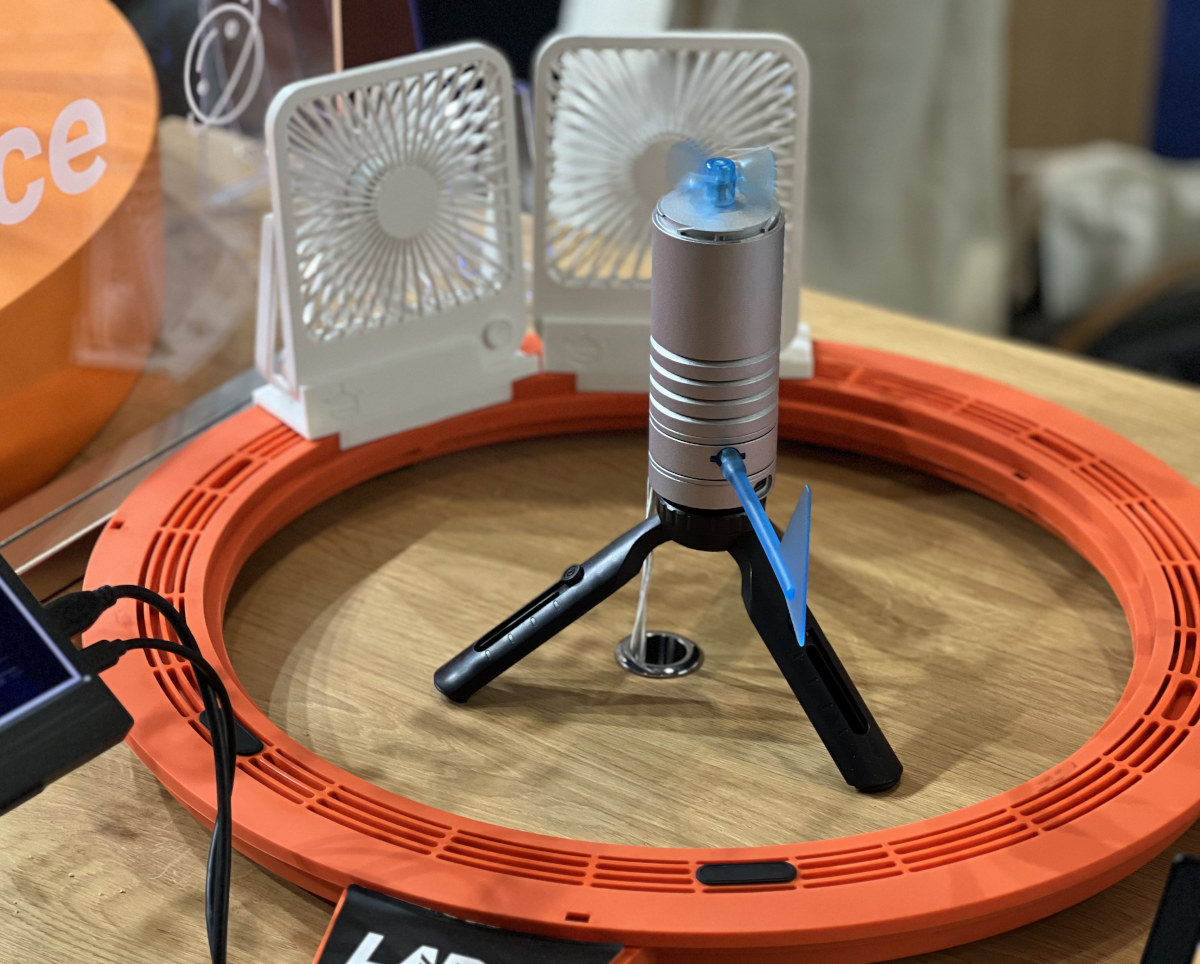Waveshare ESP32-S3-Relay-6CH is a 6-channel WiFi and Bluetooth relay module based on Espressif Systems ESP32-S3 wireless microcontroller that also supports RS485 control and comes with headers taking Raspberry Pi Pico HATs adding RTC, CAN Bus, RS232, LoRa, sensors, or other features. The relays are rated 250VAC/30VDC up to 10A, the system take 7V to 36V DC input through a terminal block, and can be programmed with Arduino or MicroPython though a USB-C port. It also features a a built-in buzzer, an RGB LED, and is housed in a DIN Rail-mountable ABS case. Waveshare ESP32-S3-Relay-6CH specifications: Wireless module – ESP32-S3-WROOM-1U-N8 by default MCU – ESP32-S3 dual-core Tensilica LX7 up to 240 MHz with 512KB SRAM Storage – 8MB Quad SPI flash Wireless – 2.4 GHz WiFi 4 and Bluetooth LE 5 u.FL connector for external antenna 6x relays via terminal blocks Rating – Up to 10A 250V AC / 30V DC […]
LoLRa project – Transmitting LoRa packets without radio using CH32V003, ESP8266, or ESP32-S2 MCU
The LoLRa project is a firmware-only LoRa transmission open-source project that works without a Semtech radio and instead relies on an I2S or SPI interface (so not exactly bit-banging) to transmit data with microcontrollers such as WCH CH32V003, or Espressif Systems ESP8266 and ESP32-S2 microcontrollers. LoRa is a proprietary protocol by Semtech, but people have been trying to reverse-engineer the LoRa PHY for years, and this culminated with a LoRa GNU Radio SDR implementation last year. But CNLohr found out you don’t even need a radio to send LoRa packets and you can instead use SPI or I2S interfaces from general-purpose microcontrollers to send packets that can be decoded by commercial off-the-shelf LoRa gateways and other chips. The current implementation is designed for the ITU Region 2 (aka The Americas) targeting the 902-928MHz frequency band, but the code could be changed for Region 1 (EU, Russia, Africa) to target 863-870MHz […]
ESP32-C5 beta board features 2.4GHz and 5GHz SMA antenna connectors, two USB-C ports
Espressif ESP32-C5 microcontroller was announced in June 2022 as the first dual-band WiFi 6 IoT chip from the company. It’s been quiet since then, but things are about to change as the ESP32-C5 beta board’s documentation has very recently been released. The ESP32-C5 was initially announced as a dual-band WiFI 6 and Bluetooth 5.0 LE SoC, but the user manual for the beta board indicates that it also supports Zigbee 3.0 and Thread 1.3, so there’s an 802.15.4 in the wireless microcontroller. The ESP32-C5 board itself features two SMA connectors for 2.4 GHz and 5GHz antennas or test equipment, two USB-C ports, two 12-pin GPIO header, Boot and Reset buttons, an RGB LED, and a 2-pin header for current measurements. ESP32-C5 beta board specifications: SoC – ESP32-C5-BETA3 CPU – Single-core 32-bit RISC-V processor @ up to 240 MHz Memory – 400KB SRAM on-chip Storage – 384KB of ROM on-chip, support […]
$6.99 Waveshare’s ESP32-C6-Pico Board resembles Raspberry Pi Pico board
Waveshare’s ESP32-C6-Pico and ESP32-C6-Pico-M development boards are equipped with the ESP32-C6-MINI-1 module supporting Wi-Fi 6(802.11ax), Bluetooth 5, Zigbee 3.0, and Thread 1.3, and inspired by the Raspberry Pi Pico form factor. They can be powered either through USB Type-C or an external 5V DC supply connected to the pins. Previously we have written about similar ESP32-C6-based boards like the SparkFun Thing Plus, ePulse Feather C6, and WeAct ESP32-C6 dev board. However, these boards are priced way over the $6.99 that Waveshare is offering. One exception is the DFRobot’s FireBeetle 2 ESP32-C6 board, which cuts costs by using the IC directly instead of the fully shielded ESP32-C6-MINI-1 module. Waveshare’s ESP32-C6-Pico board specifications: Wireless module – ESP32-C6-MINI-1 SoC – ESP32-C6H4 32-bit RISC-V microprocessor up to 160 MHz with 320KB ROM, 512KB HP SRAM, 16KB LP SRAM, 4MB flash Wireless – 2.4 GHz WiFi 6 with Target Wake Time (TWT) support, Bluetooth 5.3 LE and […]
SONOFF POW Ring Review – A WiFi CT Clamp power meter tested with eWelink and Home Assistant
The trend of measuring the energy usage of household electrical devices has become increasingly popular among Smart Home users in the past few years. We have received the new SONOFF POW Ring Smart Power Meter Switch device for review from ITEAD. Unlike SONOFF’s existing energy monitoring devices such as POW Elite, SPM, DualR3, POW3, and POW Origin, this new device, also called POWCT, utilizes a current transformer (CT) to measure the current flow, or total power being consumed. This method provides no physical contact with live wires and reduces the risk during installation. Additionally, it can measure currents of up to 100A, which is significantly higher than previous models. This makes it suitable for measuring electricity usage at the main circuit breaker, energy generated from solar panels, or even for Electric Vehicle (EV) home chargers. The SONOFF POW Ring, which we are testing today, is not only a Smart Power […]
The RP2040 Connectivity Board — An IoT solution combining LTE, Wi-Fi, and BLE into a single platform
iLABs (Invector Labs), a European embedded equipment manufacturer, has released a new device, the RP2040 Connectivity Board, an IoT development board that is based on Raspberry Pi’s signature microcontroller IC, the RP2040. The RP2040 Connectivity Board features key IoT connectivity options such as LTE, Wi-Fi, and BLE (Bluetooth Low Energy). It is compatible with both Arduino and PlatformIO and is designed for professional and hobbyist users with wide-ranging connectivity needs. The SARA-R412M series module from u-blox handles cellular communication (LTE) and can be configured to enable multi-regional coverage in both GSM and LTE-M/NB-IoT radio transmissions. It features a unique and immutable root of trust and supports IoT security as a service. The RP2040 Connectivity Board also includes an Espressif ESP32-C3FN4 chip for Wi-Fi/BLE communication based on a RISC-V microcontroller core and implementing a Wi-Fi subsystem that complies with the IEEE 802.11b/g/n standard and supports various operating modes. The Bluetooth Low […]
$35 SONOFF POW ring smart power meter (POWCT) safely supports up to 100A
SONOFF POW Ring smart power meter is the first CT clamp-based WiFi power meter from ITEAD. It is designed for installation in an electric cabinet to measure whole-house power consumption with up to 100A current. The power meter relies on an ESP32 microcontroller for control and wireless connectivity with a range of up to 130 meters thanks to an external high-gain antenna. It is supported by the usual eWelink mobile app that also enables integration with Google Home, Amazon Alexa, and IFTTT services, and ITEAD also mentions integration with the Home Assistant open-source framework. SONOFF POW Ring (POWCT) specifications: MCU – ESP32 WiFi and Bluetooth microcontroller Connectivity – 2.4 GHz WiFi 4 (802.11b/g/n) with SMA antenna connector for an external antenna to be placed outside of the electrical cabinet Current transformer (CT) interface type – RJ9 Current transformer detection range – 0 to 100A Measurement category – CAT II 0-100A […]
The Lark Weather Station works with Arduino, ESP32, micro:bit, Raspberry Pi, and other boards
The Lark Weather Station measures wind speed, wind direction, temperature, humidity, and air pressure through a range of sensors and connects to popular development boards such as Arduino UNO, ESP32, BBC micro:bit, Raspberry Pi, or DFRobot Unihiker through I2C or UART. We’ve seen several projects for Internet-connection weather stations that retrieve weather data from the web and display the results locally, but the Lark Weather Station allows the users to get atmospheric data right in his/her current location thanks to its built-in anemometer, wind vane, and built-in sensors, as well as expansion interfaces for additional sensors. Lark Weather Station specifications: Storage – 16MB flash good to store about 160 days of data (when data is recorded once per minute) Sensors Compass Anemometer Wind Speed: 0.5~12m/s Cover to protect the anemometer during storage/transport Wind vane and wind direction shaft to report the wind direction (eight directions) Temperature Range –20~60℃ ±0.2℃ Humidity […]


